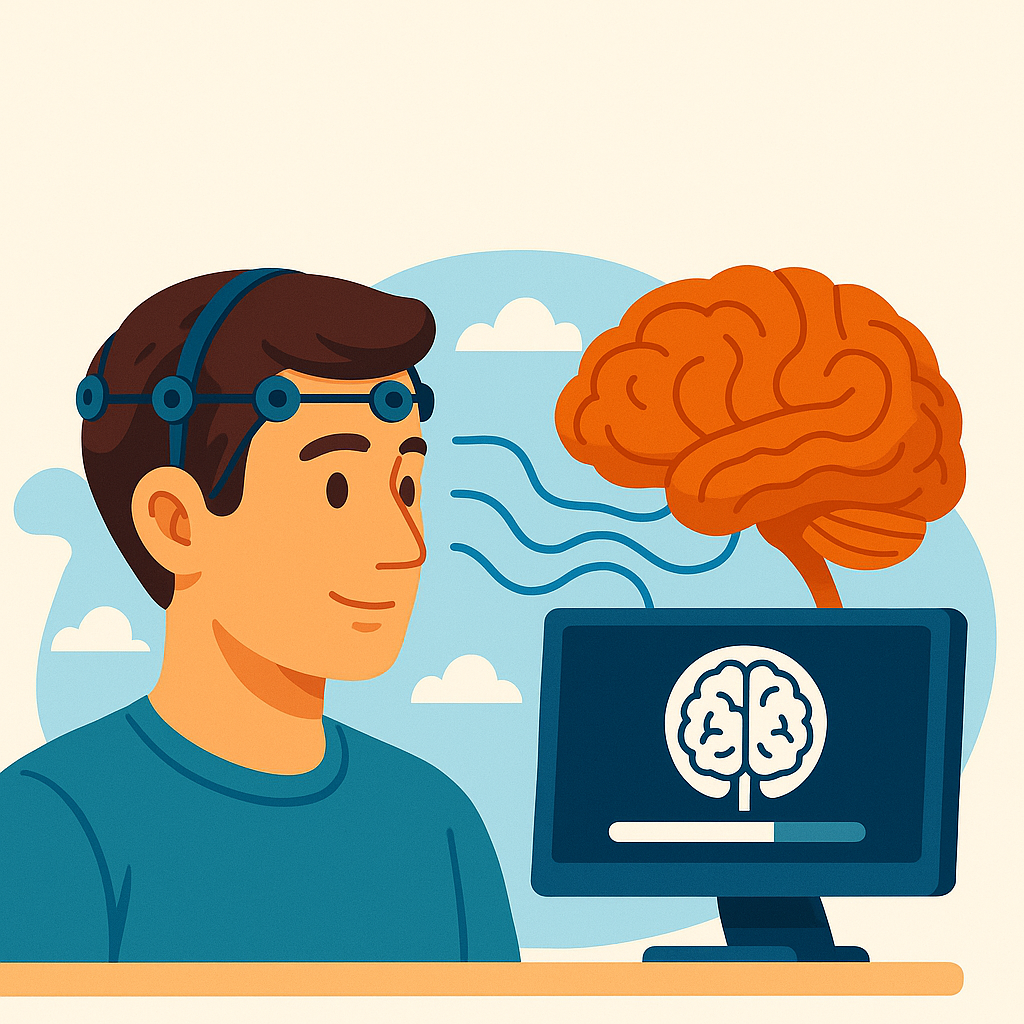Imagine controlling a computer, prosthetic limb, or even a drone using just your thoughts. What once sounded like science fiction is now becoming reality, thanks to Brain-Computer Interfaces (BCIs) — also called neurointerfaces.
But what exactly are BCIs? How do they work? And what can they do today — or in the near future?
What Is a Brain-Computer Interface?
A Brain-Computer Interface (BCI) is a system that allows direct communication between the brain and an external device — without using muscles or speech.
It works by detecting brain activity, translating it into digital signals, and sending those signals to computers, robots, or other machines. In short, BCIs let the brain “talk” to technology.
How BCIs Work: Step by Step
- Signal Detection
The first step is capturing brain activity. This is usually done using:- Electroencephalography (EEG): Non-invasive, uses electrodes on the scalp
- Implanted electrodes: Invasive, placed inside the skull for stronger signals
- fMRI or MEG: Used in research to track blood flow or magnetic fields
- Signal Processing
The brain generates weak and noisy electrical signals. BCIs use advanced algorithms to:- Filter out noise
- Detect useful patterns (e.g., when a person imagines moving their hand)
- Convert these patterns into commands
- Output Generation
Once the signal is interpreted, the system performs an action — such as:- Moving a robotic arm
- Typing text on a screen
- Controlling a wheelchair
- Sending a signal to software or another device
- Feedback Loop
Many modern BCIs include real-time feedback, so the user can adjust their thoughts to improve accuracy over time.
Real-World Applications of BCIs
Medical Uses
- Helping paralyzed patients control computers or robotic limbs
- Restoring communication for people with ALS or locked-in syndrome
- Assisting stroke recovery by stimulating specific brain regions
Neuroprosthetics
- Controlling artificial limbs with thought alone
- Providing sensory feedback (touch, pressure) in future models
Gaming and VR
- Controlling games using brainwaves
- Deepening immersion with emotional or attention-based responses
Mental Health and Research
- Measuring stress, attention, and focus
- Potential use in treating depression or PTSD (experimental)
Military and Security (controversial)
- Some governments research BCI use in drone control, lie detection, or enhanced soldier interfaces — raising ethical concerns
Challenges and Ethical Concerns
While BCIs are promising, they come with important questions:
- Privacy: Can brain data be misused or hacked?
- Consent: What happens when BCIs are used on vulnerable patients?
- Access: Will this tech only be available to the rich?
- Identity: If a machine helps you think — where does you end and the tech begin?
Researchers are calling for strict ethical standards and transparent laws to prevent misuse.
Key Terms Explained
- EEG (Electroencephalography): A non-invasive method to read brainwaves using electrodes on the scalp
- Invasive BCI: A BCI with electrodes implanted in or on the brain tissue
- Neuroplasticity: The brain’s ability to change and form new connections — essential for learning to use BCIs
- Neurofeedback: Using real-time brain data to help a person change their mental state
- Brainwave: Electrical pattern created by brain activity; includes alpha, beta, delta, and gamma waves
Final Thoughts
Brain-Computer Interfaces are no longer just sci-fi. They are real, evolving, and full of potential — especially in medicine. While challenges remain, careful development and ethical oversight could turn BCIs into one of the most important technologies of the 21st century.
The future of human–technology interaction may start inside your head.

